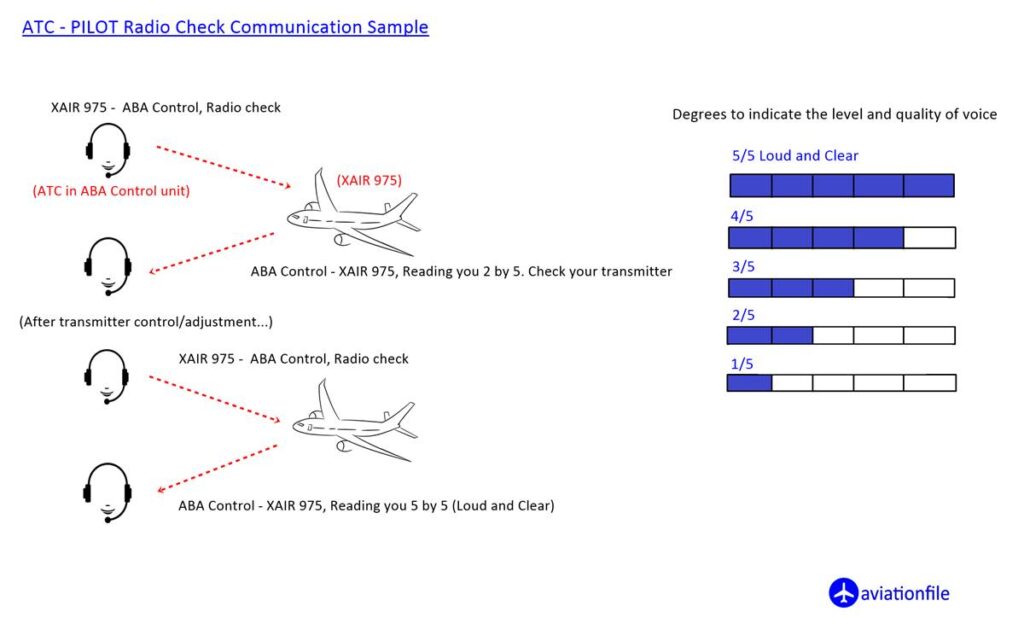Standard Aviation Phraseology, Definition and Principles
In this article, we will examine what is the standard aviation phraseology, why does it exist and what are its basic principles?
First of all, if you ask how to define the aviation environment, we can say that it is an industry that connects continents, countries, cities and transports people, products from one place to another around the world, as well as includes thousands of aviation fans.
Based on this definition, aviation is a field where people from many different cultures and languages work together. For example, imagine an airplane departing from Singapore and heading to France. She passes over many different geographies and contacts with ATCs (Air Traffic Controllers) from different nationalities. Or consider an international airport. How many pilots of different nationalities are talking with an ATC working at London Heathrow airport with daily over a thousand landing and take-off traffic?
As you can imagine, when doing such a multinational business, there should be a common, simple and certain language. And this is the language of aviation phraseology. The language that contains simple, precise, understandable expressions between air traffic controllers and pilots is called “Standard Aviation Phraseology”.
It is an easy to understand language
As can be seen from the example of the plane going from Singapore to France above, aviation language is English but there are many non-English speaking employees among the controllers and pilots. However, everyone has to use standard phraseology as a common language. Therefore, standard phraseology must contain simple and understandable expressions. Short sentences with clear words. For example:
ATC of ABA ACC: “DLH123, ABA ACC, turn right heading 320”,
It is so clear that ABA ACC unit (ATC in charge) instructs DLH123 to turn right heading 320. Than DLH123 readbacks the instruction.
Pilot of DLH123: “ABA ACC, DLH123, turn right heading 320”;
Finally, before DLH executes the instruction, ATC in ABA ACC confirms the readback.
ATC of ABA ACC: “DLH123, ABA ACC, Affirm”,
As you see from this short R/T communication sample, the sentences are short, words are simple and clear (Of course some instructions can be longer by its purpose. The main idea is sentences without unnecessary and confusing words). Moreover, readback/hearback procedures in the controller & pilot R/T communication also prevent misunderstandings and increase safety.
Includes certainty
Another feature of standard phraseology is that it contains precise expressions. Accuracy is very important in aviation, especially in communication between pilot and controller. An instruction given by the controller to the pilot can affect many traffic in the airspace. Or a statement that the pilot transmitted to the controller may contain very critical information and the pilot may not have the opportunity to repeat it. Therefore, the expressions used should be precise and should not cause any confusion. For example, when giving a taxi instruction to an airplane, the border must be specified as “BAW897 ABA Tower Taxi to holding point runway 36 via B than F”.
As you see the instruction is certain. BAW897 is instructed to go to the holding point of runway 36 by following B than F taxiways.
In addition, there are no place for the words like thank you, please, welcome which express the feelings. These kind of words has negative effect on the certainty of the sentences. It may sound a little bit robotic, and yes that’s fair to say like that but to create a safety environment, the R/T communication between pilot and ATC must be logical without feelings.
A brief look to communication and microphone techniques.
1. Before sending, make sure you listen to the frequency and that no other people are sending. Make sure that the frequency is not blocked.
2. Use the microphone appropriately. Do not touch the microphone on your lips completely or don’t hold it too far and shout.
3. Set your tone well. Try to speak in a firm, clear and clean tone.
4. Being too quick in speaking affects understanding of your statement and you may need to repeat it, which means a waste of time. Talking too slowly also occupies the frequency for a long time.
5. Take a short break before and after pronouncing numbers and important phrases so that the other party can understand you more clearly.
6. Do not start talking and do not leave early without pressing the send button, repeated calls will increase your workload.
7. Deliver your message to the other party as many times as possible.
8. If the station did not answer your first call, wait a short time for the second call and repeat.
9. Most importantly, ask for any instructions you do not understand. Follow the readback/hearback rules. An instruction that is misunderstood and implemented can result in disaster.
When communication between the controller and pilot is of poor quality, one party may not be able to hear the other clearly.

International Standards of Phraseology are laid down in ICAO Annex 10 Volume II Chapter 5, ICAO Doc 4444 Chapter 12 and in ICAO Doc 9432 – Manual of Radiotelephony.
On the other hand, many countries make some regulations in line with their local conditions by taking into account ICAO standards. And they broadcast these regulations with related manuals.
Article about Aviation Alphabet.


